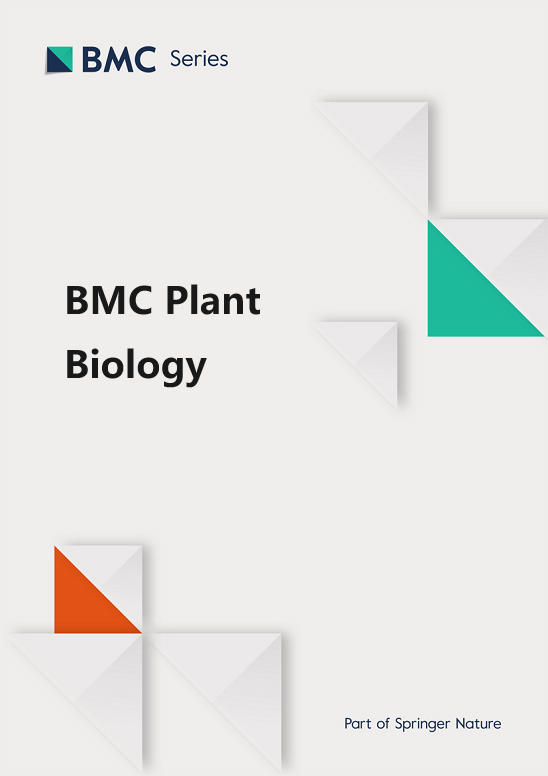Multi-omics analysis revealed the mechanism underlying flavonol biosynthesis during petal color formation in Camellia Nitidissima
IF 4.3
2区 生物学
Q1 PLANT SCIENCES
引用次数: 0
Abstract
Camellia nitidissima is a rare, prized camellia species with golden-yellow flowers. It has a high ornamental, medicinal, and economic value. Previous studies have shown substantial flavonol accumulation in C. nitidissima petals during flower formation. However, the mechanisms underlying the golden flower formation in C. nitidissima remain largely unknown. We performed an integrative analysis of the transcriptome, proteome, and metabolome of the petals at five flower developmental stages to construct the regulatory network underlying golden flower formation in C. nitidissima. Metabolome analysis revealed the presence of 323 flavonoids, and two flavonols, quercetin glycosides and kaempferol glycosides, were highly accumulated in the golden petals. Transcriptome and proteome sequencing suggested that the flavonol biosynthesis-related genes and proteins upregulated and the anthocyanin and proanthocyanidin biosynthesis-related genes and proteins downregulated in the golden petal stage. Further investigation revealed the involvement of MYBs and bHLHs in flavonoid biosynthesis. Expression analysis showed that flavonol synthase 2 (CnFLS2) was highly expressed in the petals, and its expression positively correlated with flavonol content at all flower developmental stages. Transient overexpression of CnFLS2 in the petals increased flavonol content. Furthermore, correlation analysis showed that the jasmonate (JA) pathways positively correlated with flavonol biosynthesis, and exogenous methyl jasmonate (MeJA) treatment promoted CnFLS2 expression and flavonol accumulation. Our findings showed that the JA-CnFLS2 module regulates flavonol biosynthesis during golden petal formation in C. nitidissima.多组学分析揭示了山茶花花瓣颜色形成过程中黄酮醇生物合成的内在机制
山茶花(Camellia nitidissima)是一种稀有、珍贵的山茶花品种,花朵呈金黄色。它具有很高的观赏、药用和经济价值。先前的研究表明,在花朵形成过程中,C. nitidissima 花瓣中黄酮醇大量积累。然而,C. nitidissima 金色花形成的机理在很大程度上仍然未知。我们对花瓣在五个花发育阶段的转录组、蛋白质组和代谢组进行了综合分析,以构建 C. nitidissima 金色花形成的调控网络。代谢组分析表明,金色花瓣中含有 323 种黄酮类化合物,其中两种黄酮类化合物--槲皮素苷和山奈酚苷在金色花瓣中高度积累。转录组和蛋白质组测序表明,在金色花瓣阶段,黄酮醇生物合成相关基因和蛋白质上调,花青素和原花青素生物合成相关基因和蛋白质下调。进一步研究发现,MYBs 和 bHLHs 参与了黄酮类化合物的生物合成。表达分析表明,黄酮醇合成酶2(CnFLS2)在花瓣中高表达,其表达量与花朵各发育阶段的黄酮醇含量呈正相关。花瓣中 CnFLS2 的瞬时过表达增加了黄酮醇的含量。此外,相关分析表明,茉莉酸(JA)途径与黄酮醇的生物合成呈正相关,外源茉莉酸甲酯(MeJA)处理促进了CnFLS2的表达和黄酮醇的积累。我们的研究结果表明,JA-CnFLS2模块调控了硝化细菌金色花瓣形成过程中的黄酮醇生物合成。
本文章由计算机程序翻译,如有差异,请以英文原文为准。
求助全文
约1分钟内获得全文
求助全文
来源期刊

BMC Plant Biology
生物-植物科学
CiteScore
8.40
自引率
3.80%
发文量
539
审稿时长
3.8 months
期刊介绍:
BMC Plant Biology is an open access, peer-reviewed journal that considers articles on all aspects of plant biology, including molecular, cellular, tissue, organ and whole organism research.
 求助内容:
求助内容: 应助结果提醒方式:
应助结果提醒方式:


